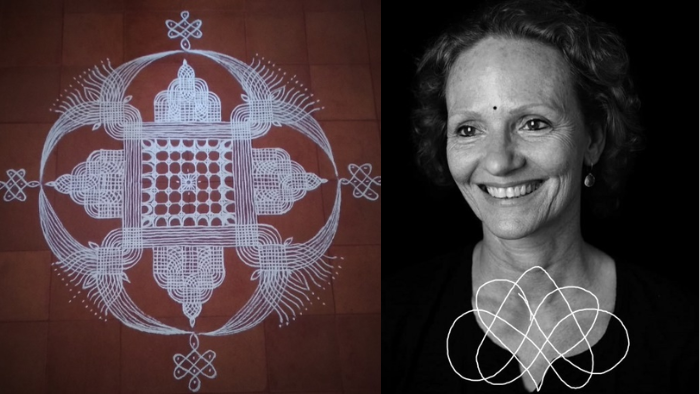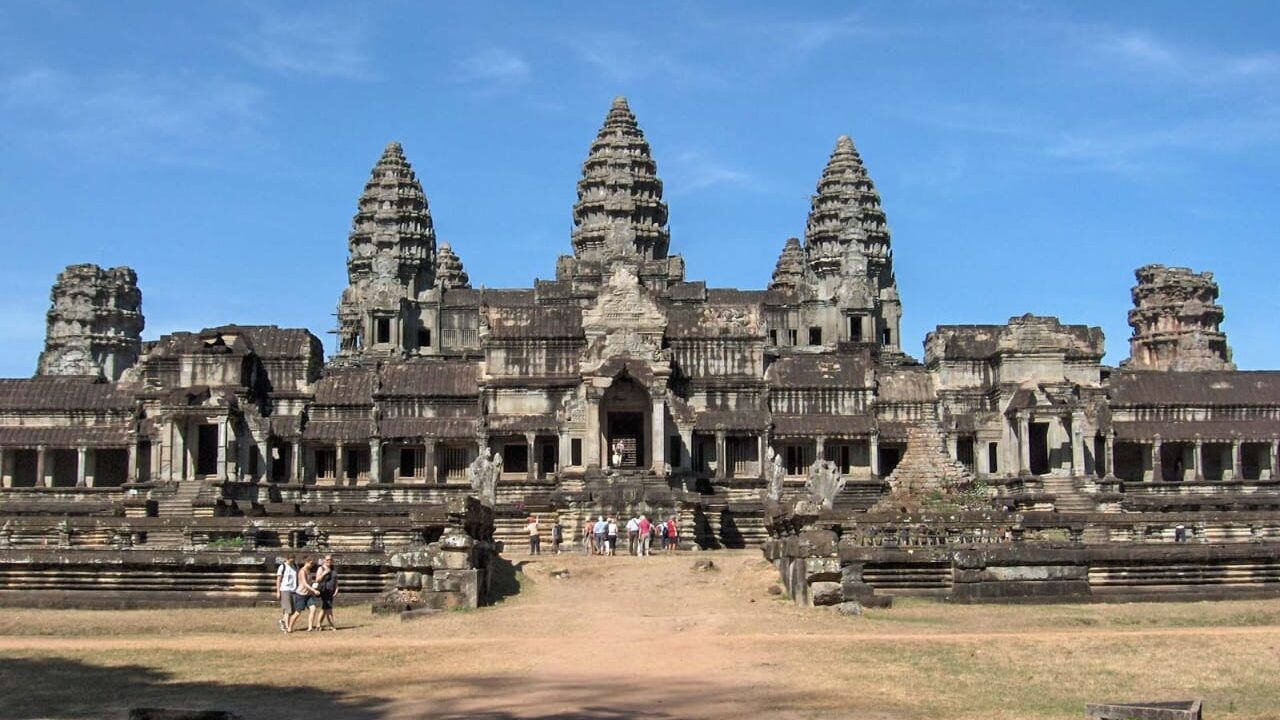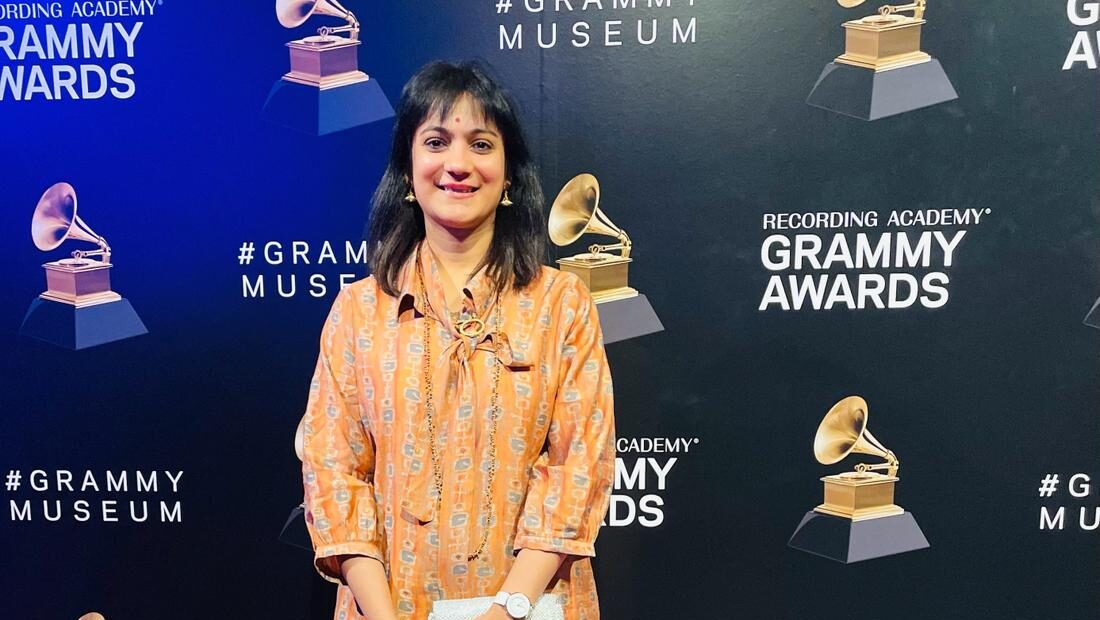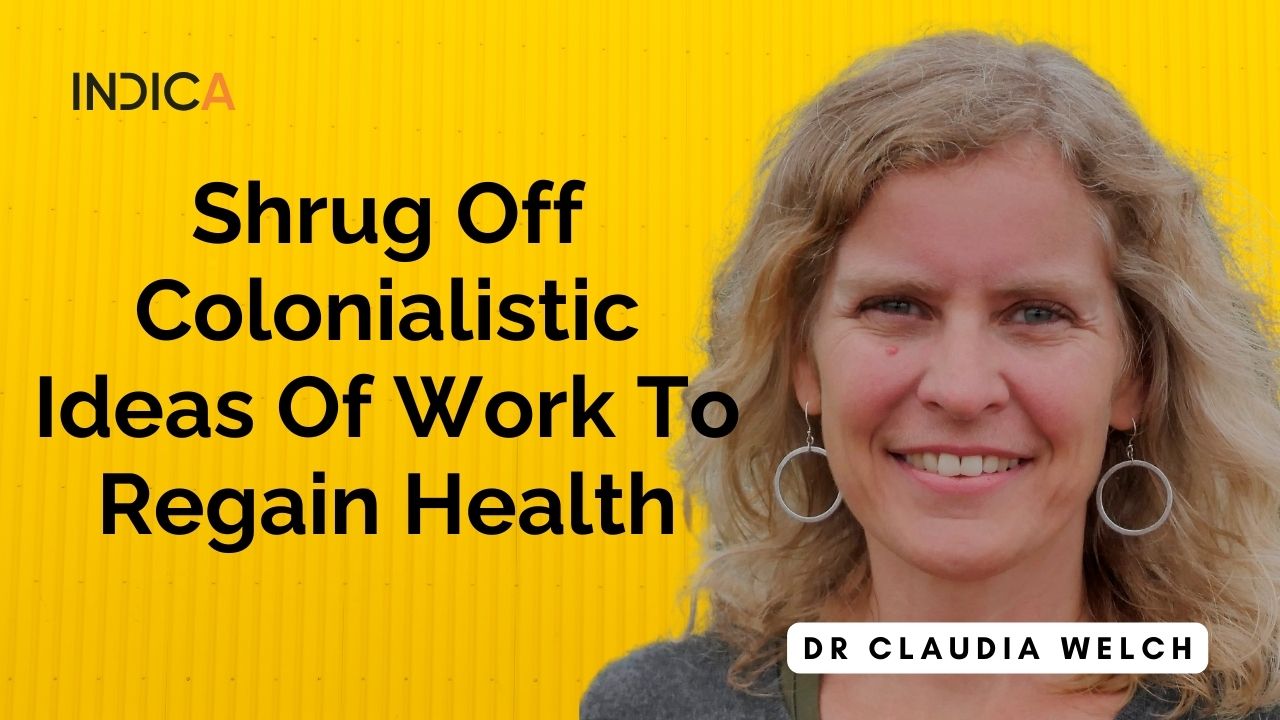In May 1968, baby Grace Gitadelila arrived in Port Madras along with her parents who left behind their lives to join Sri Aurobindo Ashram. Having grown up in the ashram, the mother of three continues to live in Auroville, where she works and conducts research on Kolam. Grace runs a course on Kolam known as KolamYoga where she not only teaches the art of Kolam but also gives an insight into how this form of visual art can be incorporated into various disciplines of life.
Indica Soft Power was in conversation with Grace to learn more about her journey with Kolam and her research into this artform.
How did Kolam come into your life and what does it mean to you?
My mother taught me my first Kolàm. She used to run a design atelier in Pondicherry with around 500 Tamil women who would come in weekly to our home to pick up embroidery work. Many of these women taught me Kolàm too. It was only much later in life, when I returned to Europe, that I realised how my Kolam practice was unusual to white women. When I was questioned about the artform, I was at a loss. This catapulted me on a journey of diving into Kolàm, studying its language and its vocabulary.
What was the idea behind KolamYoga?
KolamYoga presented itself to me through Kolam. Kolàm asks me to represent it as Yoga. Let me tell you what KolamYoga stands for. Ko means ascending, aspiration, male, and the energy of fire of the highest truth. Lam means descending, anchoring into earth, bhumi, female, offering of the highest truth to manifest. Yoga means to yoke, harness, learn, research and master Kolàm. Ultimately, it is to find unity in Kolam.
Do you think the current generation is losing out on understanding the art of kolam? If so, how do we reinstate it?
Our current generation is conditioned to consume rather than create. Therefore an entire generation (with exceptions) has passed on the Kolàm practice in a copy-paste manner. This does not nourish deeply and therefore becomes a meaningless practice to those who do not know how to engage and practice the Yoga of Kolàm. Many young people are attracted to a globalised lifestyle that no longer incorporates a deeper relationship to earth, with earth and for earth. Traditions that now come as obligations no longer function well in this way of living.

In order to find motivation in the practice of Kolàm, it is not sufficient to do what has been done because it is how it has always been done. KolamYoga therefore gives an opportunity to all who wish to taste how this practice can actually empower us in today's world; the opportunity to become true to oneself, the opportunity to discover how to co-create life by deeply learning to connect to its essence- the essence of life, form and function of all living matter on earth and how this is within us and how we are part of this world and the responsibility upon us to create this life.
ISP recently interviewed a Spanish mathematician Prof Oscar Garcia and his anthropologist wife Claudia Silva. The duo have been studying and researching on kolams for the past decade. They are of the view that kolams are great tools to teach mathematics and must be incorporated in schools and other academic institutions. In what other ways can Kolam help in academic institutions?
Yes, the Kolàm is absolutely a wonderful learning tool. Not only does it address the human being physically, mentally and emotionally but it also helps in self-discovery and empowers one in becoming active co-creators of life in all facets..
The faculties of the mind - motor skills, balance of rhythm, brain synchronisation, symmetry, harmony - are trained such that they enhance consciousness and are involved in the learning of Kolàm. Science is finally catching up with what Kolàm has to offer; a storehouse of knowledge in formulas, numerology, Tessellations, fractals, sacred geometries and more.
We are just at the brink of piecing together what Kolam can teach us, because it is only now that we are able to have access to all the components of its vocabulary, making it a universal puzzle for us to piece together.
Can this meditative art form help in the child neurology, and in alleviating neurological disorders, in a sense that it creates beauty on the outside and inside?
Kolàm definitely can, if handed out by a skilled and knowledgeable practitioner, be an incredible tool for and of healing, not only for neurological disorders but all disorders given that it finds support and resonance in all the other aspects of the life of the human undergoing treatment.
Healing takes place integrally and Kolam can ignite, support and speeden up the healing process. It supported me in my journey healing from cancer. It helped me understand how to change the patterns of my life that needed change, and even showed me how to change them.

My mother runs a school in the Netherlands called it devKolam. She trains adults to become art therapists. In that she has been teaching many to make use of the Kolàm, in therapy, in elementary schools, as a remedial help for children with learning difficulties, for the eldery with Alzheimers.
What are KolamYoga's future endeavours?
I am currently developing KolamYoga learning videos that will soon be made available for purchase. The first 4 are about Paddi Kolàm and it will be ready in August. Furthermore, I would love to train more Indians, who are already well-experienced Kolàm practitioners, into becoming KolamYoga teachers.




